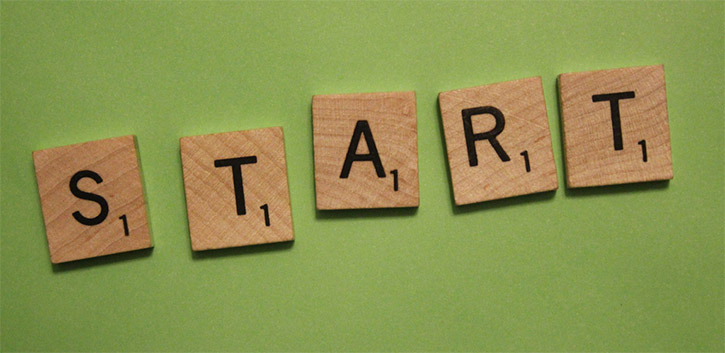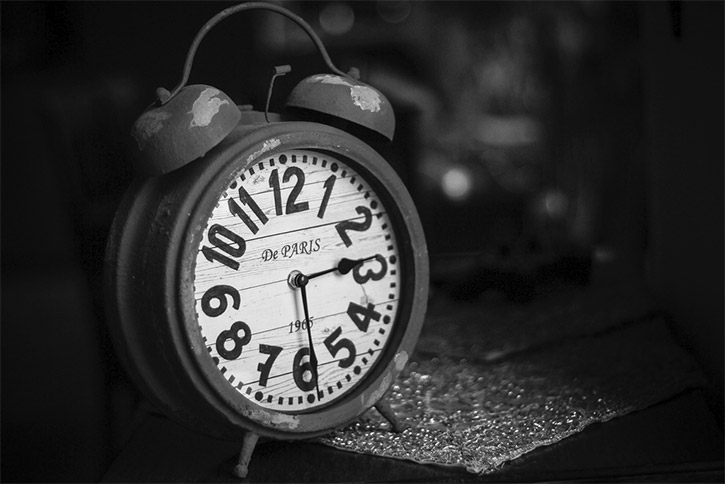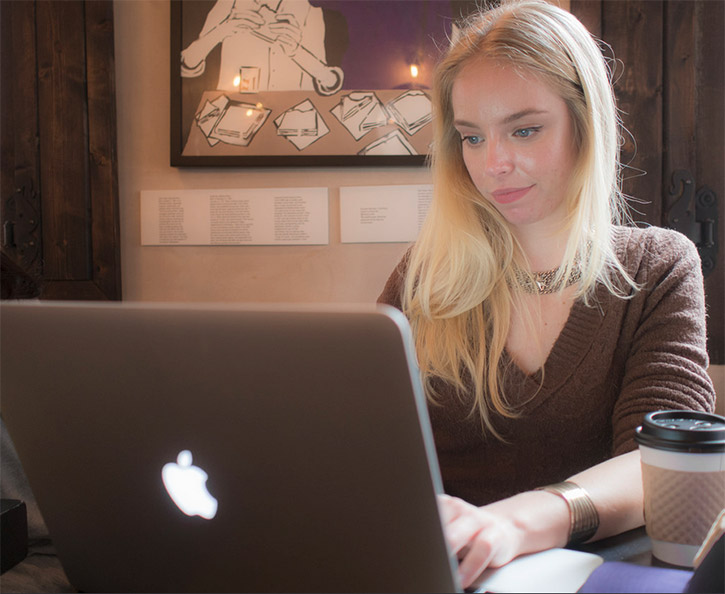The freelance designer has a job that many people envy. Being able to work from home or anywhere with an internet connection, having flexibility with working hours, avoiding a rush hour commute, and being able to wear whatever you want to work are some serious perks. However, working independently and working from home brings plenty of challenges as well. One of those challenges is procrastination.
In a typical job, you would have a boss that has a big influence on how you use your time and what you focus on. But when you are working on your own, it is up to you to stay on task, and procrastination can easily set in.
Sure, you have clients that you answer to, but they aren’t looking over your shoulder or able to see what you do with your time throughout the day. Without some discipline and a few tricks to beat procrastination, you can easily wind up missing deadlines and letting projects drag on for too long.
If you want to work more efficiently, get projects done faster, stop procrastinating, and be more profitable, here are 9 tips to make it happen.
1. Get Started

Photo Credit: Start by JakeandLindsay Sherbert
Simply forcing yourself to get started is often the key to beating procrastination. Once you get started and progress is being made, it is usually a lot easier to keep going forward.
For some reason, there can be a mental block with getting started, especially when it is a task or a project that doesn’t necessarily excite you. Once you force yourself to get started, you will clear that first hurdle, and many times, the rest will flow much easier.
2. Set Milestones for Your Projects
Another common cause of procrastination is only looking at the big picture of the project. The project may seem overwhelming, or in other cases, it may seem easier or quicker than it turns out to be. Breaking the project down in to smaller tasks and milestones can help in either case.
If the project initially seems overwhelming, breaking it down into sections can help to show that it is possible and achievable–you just need to focus on one thing at a time and make progress. If the project initially seems too easy, breaking it down can help you to see all of the tasks that are involved so you do not overlook anything or underestimate how much time it will take.
Once you have the project broken down into sections or milestones, you can estimate the amount of time that will be required for each as well as a date of completion. This is a great way to help you stay on task because at any point you will be able to look at your schedule for the project to see if you are on pace. In some cases, these milestones may be shared with the clients, and in other cases, you can simply use them to help with your productivity.
3. Take Projects That Interest You
Whenever possible, try to stick to projects that appeal to you. If you are excited to work on a project, you are much less likely to struggle with procrastination.
It’s not always possible or practical for freelancers to pass on projects simply because of a lack of interest in the project, as many freelancers are always in need of more work. However, if you are in a position where your schedule tends to stay pretty full, consider being more strict with the projects that you accept.
While most freelancers may not be in a position to turn down a lot of projects, one thing any freelancer can do is specialize or work towards branding themselves in a way that will lead to the types of projects they want. For example, if working with clients in a particular industry is something that you really enjoy, work to brand yourself as a leader in that industry. Do whatever you can to get some items in your portfolio that will be a good fit for your specialization, even if it means proactively seeking these types of clients and even discounting your work until you’re reputation is established.
If you don’t care about the industry your clients are in but you really like to work on WordPress-powered websites, specialize in that area. There are any number of possibilities when it comes to specialization, and it can be a great way to get the types of projects that interest you the most.
4. Set Normal Working Hours for Yourself

Photo Credit: Old Clock by Omer Unlu
One of the challenges of freelancing or working on your own is that there is no one to tell you when you need to be working and when you can have time for yourself. Some freelancers struggle with working too much and not taking time away from work, and others struggle with not getting around to work.
If procrastination is leading to fewer working hours because you get distracted by other things, consider giving yourself a schedule of normal working hours. Once you develop the habit of working certain hours, it becomes second nature, and you’ll have a much easier time getting things done when you should be working.
I’ve been working from home full-time for over 6 years now, and I stick with working hours that are pretty typical of what I would have if I worked a more traditional job. I (usually) don’t have the temptation to sleep in or do something else with my days because I’m in the habit of working a set schedule.
5. Use Blocks of Time in Your Schedule
As a freelancer, you will have all kinds of different duties and responsibilities. Not only will you have client work to do, but you’ll also have to deal with all the financial, administrative, and routine tasks of running a business. This may not seem like much at first, but it all adds up. The result is that your days can easily fill up with lots of little things. While these little things need to be done, they can also get in the way of your core work.
I find it helpful to set aside blocks or chunks in my schedule for specific projects. If you are coding a website for a client, it is very difficult to make real progress when you only have short spans of time that you can work on it between all of the little things that you need to do. Instead of allowing those other things to distract you, set aside blocks of time where you can focus on your project.
For example, set aside 3 or 4 hours in the afternoon when you will do nothing but code. Significant chunks of time like this can make it easier to stay focused and get work done quickly. When creating your schedule, start by blocking off time for the important projects and let the less significant tasks fill the gaps around those blocks.
6. Try a Dash
The dash is a concept crafted by Merlin Mann in this article at 43Folders nearly 10 years ago. Mann describes the dash as “simply a short burst of focused activity during which you force yourself to do nothing but work on the procrastinated item for a very short period of time—perhaps as little as just one minute.” The basic idea is to force yourself to make some progress quickly. He recommends picking a very modest goal and choosing the most appropriate of three different kinds of dashes: the time-based dash, the unit-based dash, and the combination dash.
The time-based dash obviously involves working on something for a set period of time. His recommendation is to “choose an amount of time that gives you enough room to do something but that’s brief enough to seem completely unintimidating.” Mann mentions that eight minutes often works well for him.
The unit-based dash would be relevant when you need to go through a number of something, such as reading five pages. The combination dash would allow you to stop working whenever you reach either a time limit or unit limit. For example, you could stop reading after 5 minutes or 5 pages, whichever comes first.
Mann’s concept of dashes could be implemented into any design or development project, and it can work because it gets you to make progress even if you are really dreading the work.
7. Take Breaks
Staying focused also requires taking breaks. Working too long without breaks can hurt your concentration, not to mention that it can be bad for you physically. Take short breaks often to keep your focus and to help get you back on track.
When I’m struggling with procrastination, I’ll usually leave my office for a few minutes, and simply go get a drink. If it’s nice outside, I might step out and get some fresh air for a few minutes. When I come back from these types of short breaks, I’m usually much more focused and able to dive back into whatever I was working on.
8. Know Your Distractions and Avoid Them
Working from home comes with a lot or perks, but it inevitably will lead to distractions, especially if there are others in the house while you are working. Everybody faces different distractions, but it is important to know what your biggest distractions are so you can eliminate them or at least minimize them.
Your distractions might include things like constantly checking your email, spending too much time on social networks, TV, kids, construction noise outside your house, or any number of other things. Not all distractions can be completely avoided, but just about any distraction can be minimized.
If noises from other people or from things outside your house are a distraction, you may want to use noise-cancelling headphones. If checking email or social networks is a major distraction, you may need to completely close them and only open them at certain times during the day.
Personally, I prefer to work while listening to music, but sometimes music can actually distract me. Writing is often one of those situations for me. So right now as I am writing this article, I have the music turned off so I can work more efficiently, and when I’m done writing, I’ll turn the music back on. For you, music may not be a distraction at all. But I know that it often distracts me when I’m writing, so I avoid it. The key is to be honest with yourself about your distractions so you can find a way to minimize them.
9. Change Your Environment

Photo Credit: Intense Woman at Work
Sometimes you may get renewed energy or focus simply be changing your environment. When I first started working from home, I needed to rely on this all the time, but over the years, it has become less of an issue for me. The first 2 years I worked from home, I would spend part of the day in my home office, part of the day working from the kitchen table, and at least a few days a week, I’d spend several hours at a public library. Coffee shops are also common “offices” for freelancers.
If you find that focus is a major part of your procrastination, consider changing your environment. Simply working from a different room or different location can often give you the spark you need to regain focus on making progress.
What’s Your Experience?
How do you beat procrastination? Is it something that you struggle with? Feel free to share your own tips in the comments section.
